
Grasses Around Las Vegas, Vegetation Around Las Vegas
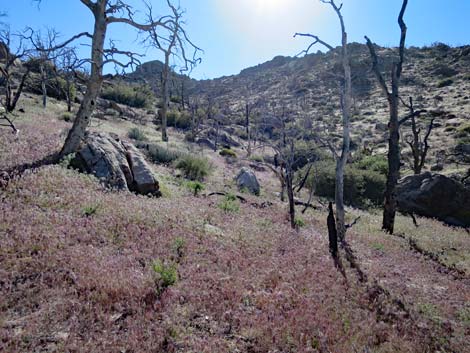 Red brome carpets parts of the Mojave Desert and carries fire |
General: Red Brome Grass (Bromus rubens) is a non-native, invasive species that grows densely under native shrubs and in the open spaces between shrubs. This grass sprouts early in the spring, grows quickly, then sets seed and dies, leaving a dense carpet of dry grass that carries fires in areas that once rarely burned because shrubs were spread too far apart. Because it burns so easily, Red Brome Grass threatens to change the Mojave Desert from a shrub-dominated landscape to an open grassland. A related grass, Cheatgrass, is having a similar effect on the Great Basin Desert. Red Brome Grass looks much like any other grass, but it can be recognized because it forms dense carpets of individual plants. The seed heads tend to stand erect (not obviously drooping). This is one of the species that fills your socks with prickly seeds. Although widespread in the Mojave Desert because it is an invasive species, Red Brome is a common component of all vegetation associations in the Lower Sonoran (Creosote-Bursage Flats) and Upper Sonoran (Mojave Desert Scrub) life zones. |
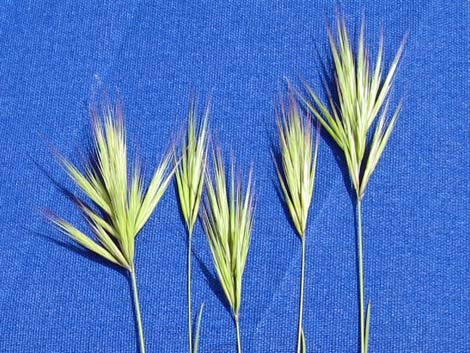 |
Family: Grass (Poaceae). Other Names: bromus, cheat grass; foxtail chess, Bromus madritensis, ripgut grass. Plant Form: Annual grass. Tuft of leaves at the base with taller flower stalks. Grows in dense carpets of individual plants (not a sod-like species), especially under shrubs. Height: Usually about 10 inches (4 to 20 inches). Stems: Round, hollow, covered with minute hairs; nodes swollen. Leaves: Basal, alternate, 2-ranked, linear; hairy; blade flat to in-rolled, 1–4 mm wide Flowers: Blooms March to June. Inflorescence 3–8 cm, cylindrical, dense, panicle-like, on a stiff stalk. Flowerheads upright (not obviously drooping). |
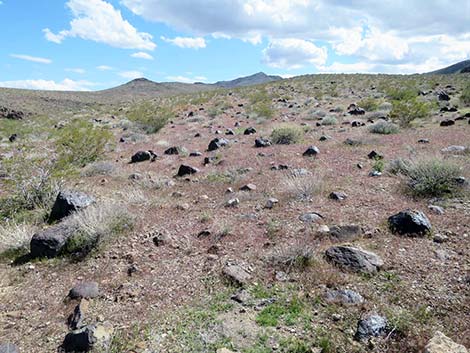 Drying Red Brome filling the spaces between shrubs |
Seeds: Small achene-like grain (like a sunflower seed) in a sheath with a sharp, pointed end and a long (to 1 inch) tail. Sticks in your socks and stabs your ankles. Habitat: Dry, well-drained sandy, gravelly, and rocky soils on upper bajadas and moderate slopes in the lower mountains. Elevation: To 7,000 feet. Distribution: Native to Europe and Eurasia, introduced widely across the western U.S. |
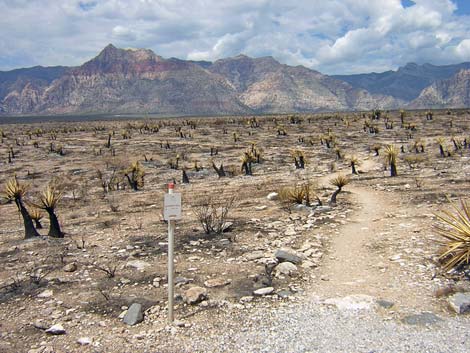 Results of a grass-fed fire at Red Rock Canyon NCA |
Comments: This invasive exotic species is changing the nature of vegetation in the Mojave Desert. Before Red Brome Grass invaded, shrubs were widely spaced across much of the desert. When wildfires started, typically they would burn a few shrubs and burn out because the flames couldn't reach the next shrub. Since the invasion, Red Brome Grass has filled in the spaces between shrubs, allowing fires to spread quickly and widely. After the native species burn, more Red Brome Grass grows in, making it harder for native species to grow back. In addition, Red Brome Grass makes it so that fire can burn every year with the potential to suppress the reestablishment of native species. In the long term, the change in the natural fire cycle has major implications for native shrubs in the Mojave Desert. In the Great Basin Desert, Cheatgrass is similar to Red Brome Grass, with the potential to convert large areas of Sagebrush to annual grasses. |
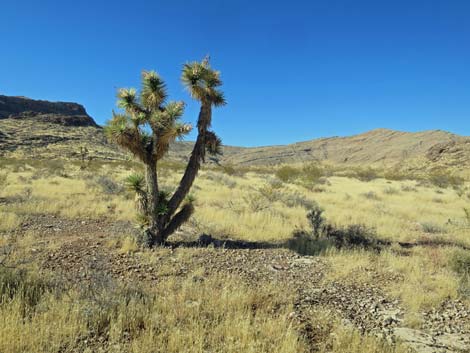 Red Brome fills in the spaces between and under bushes |
The main affect that Red Brome has on the ecosystem is spreading fire into habitats that previously did not burn and so were not fire adapted. When landscapes burn, you greatly decrease biodiversity of all kinds. Just drive through an old burn zone and you can see the difference where Joshua Trees and conifer species don’t grow back, at least not on the scale of a few decades. There are unseen difference too; for example, when Yucca species burn, Night Lizards have nowhere to live. Before Red Brome burns, it sprouts earlier in the year than our native annuals. By starting earlier and getting established, Red Brome consumes most of the available soil moisture, leaving less for the native annuals. Fewer native annuals means less food for tortoises and other herbivores, and it also means fewer seeds for kangaroo rats. Fewer prey species results over time in fewer predators and a general decline in species abundance. After Red Brome dries, the pointed seeds get stuck in our socks, which is annoying. They also get stuck in Desert Tortoise nostrils, but to unknown effect. I've also handled a young tortoise (perhaps 5-8 years) who had wads of Red Brome seeds impacted on both side of its neck (between the neck and the forearms). The seeds abraded the skin and entered the body cavity, caused infection, and killed the tortoise. We tried to publish this observation, but because we didn't have a formal autopsy from a medical expert, the journal refused to accept it. To me, that felt more like a suppression of science than anything to do with needing expert medical advice. |
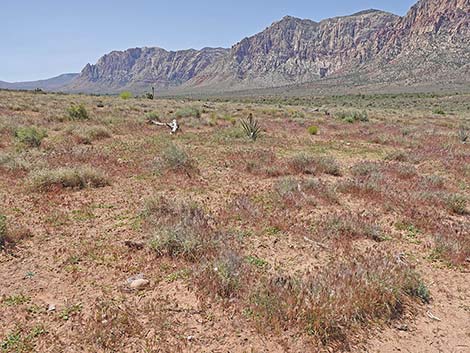 Red Brome fills in the spaces between and under bushes |
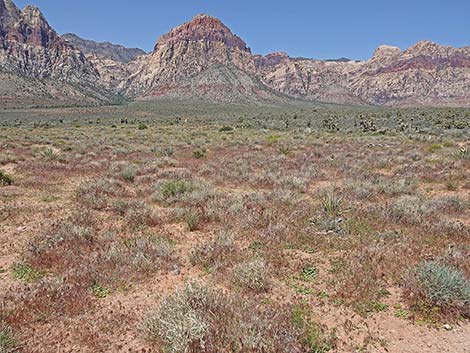 Red Brome fills in the spaces between and under bushes |
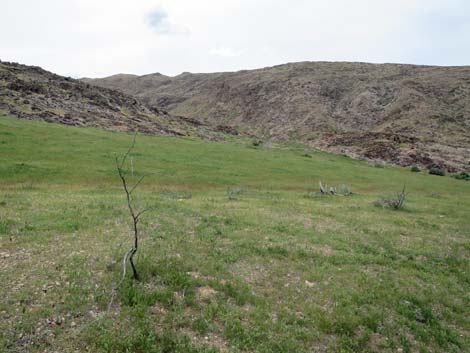 Red Brome covering the landscape after a fire |
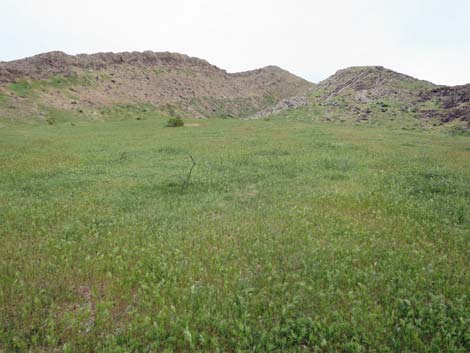 Red Brome covering the landscape after a fire |
 Red brome can carpet the landscape |
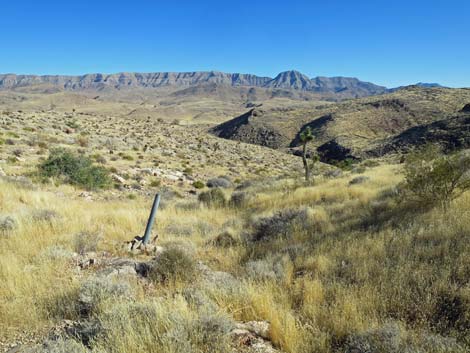 Red brome can carpet the landscape |
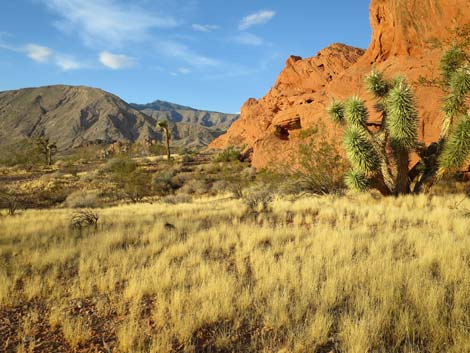 Red brome carpets parts of the Mojave Desert |
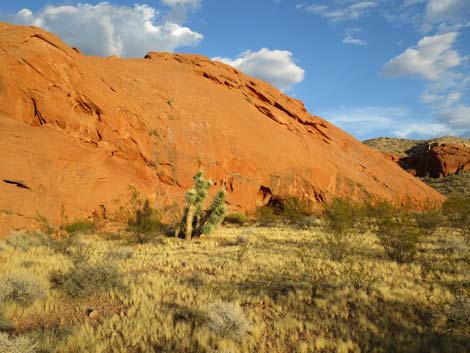 Red brome carpets parts of the Mojave Desert |
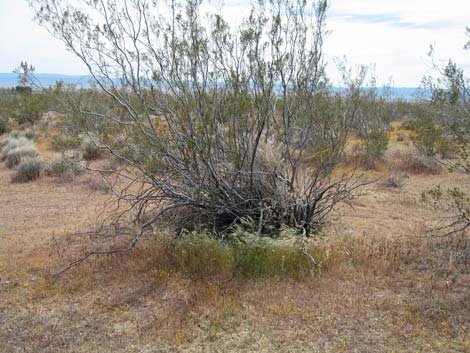 Red Brome fills in the spaces between and under bushes |
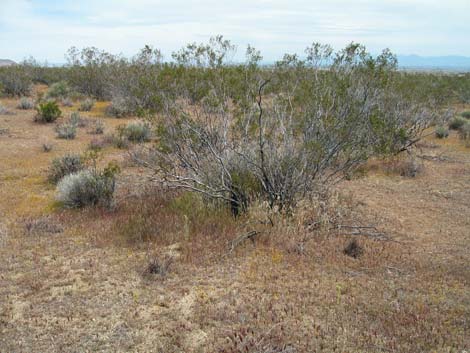 Red Brome fills in the spaces between and under bushes |
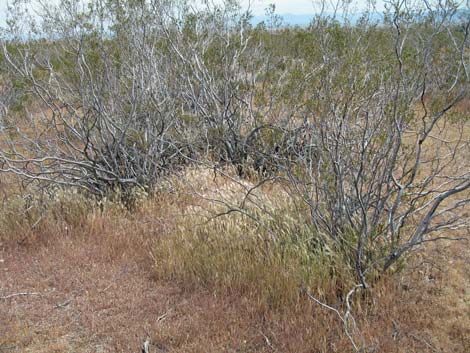 Red Brome fills in the spaces between and under bushes |
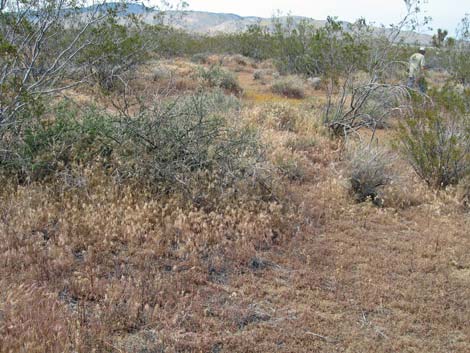 Red Brome fills in the spaces between and under bushes |
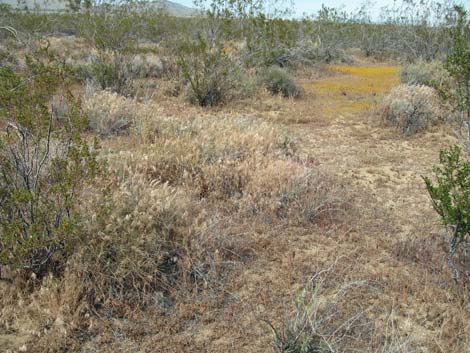 Red Brome fills in the spaces between and under bushes |
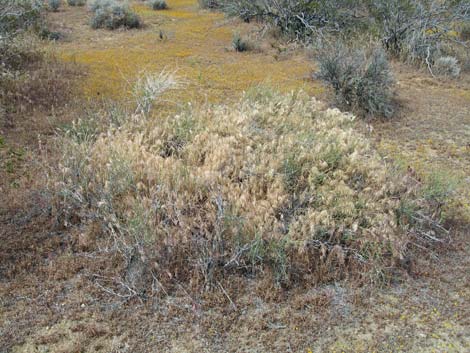 Red Brome fills in the spaces between and under bushes |
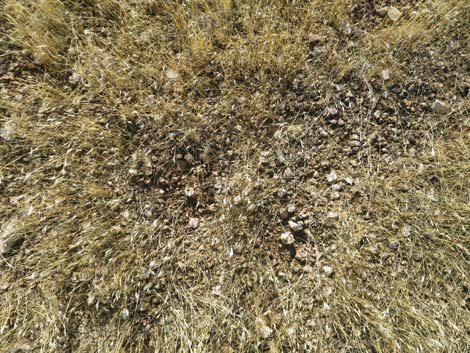 Red Brome grows densely in the spaces between shrubs |
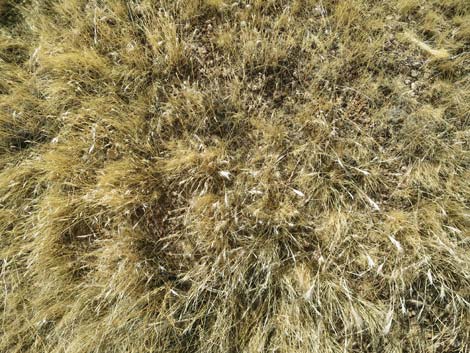 Red Brome grows densely in the spaces between shrubs |
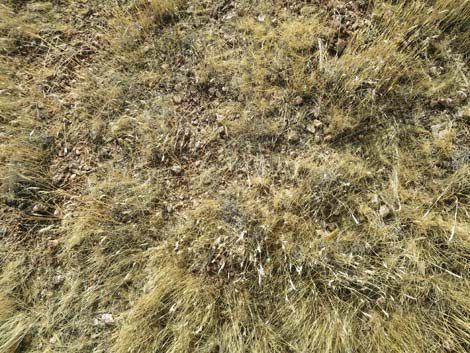 Red Brome grows densely in the spaces between shrubs |
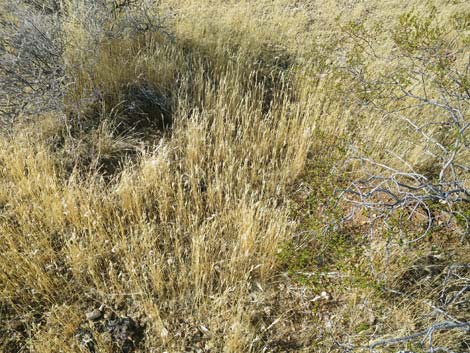 Red Brome grows densely in the spaces between shrubs |
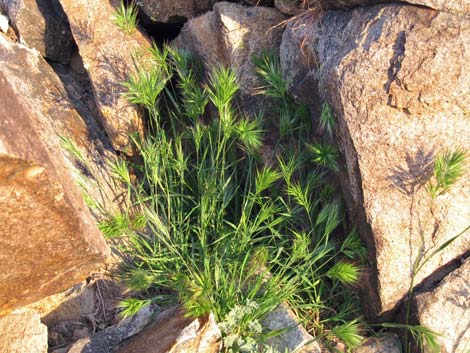 Fresh, green plant |
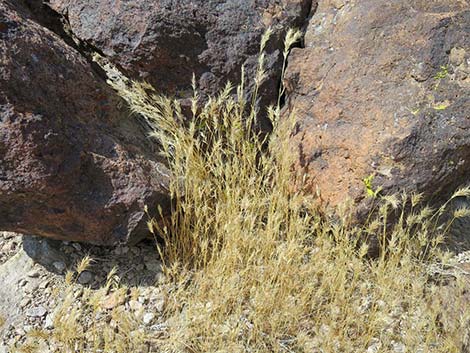 Dried plant |
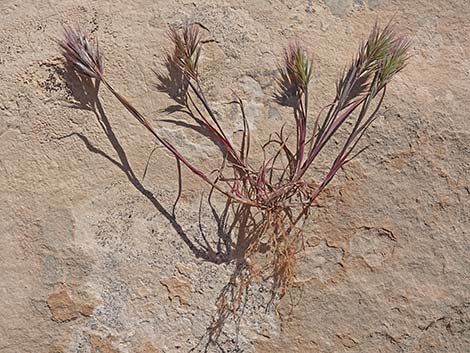 Red brome root system |
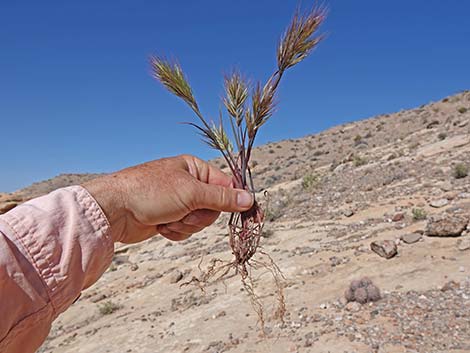 Red brome root system |
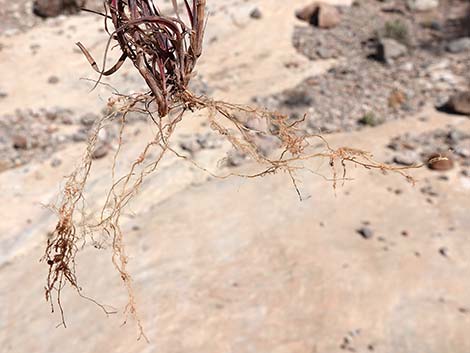 Red brome root system |
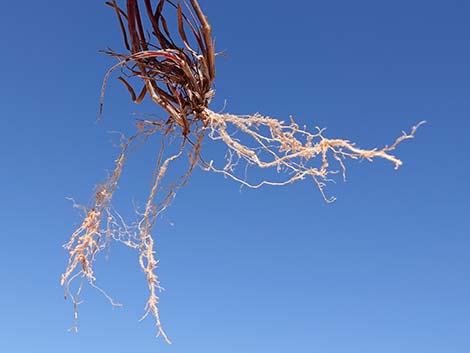 Red brome root system |
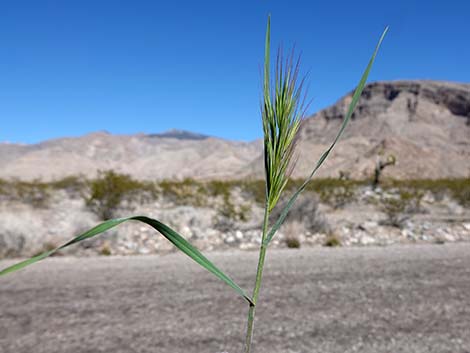 Leaves are long and narrow |
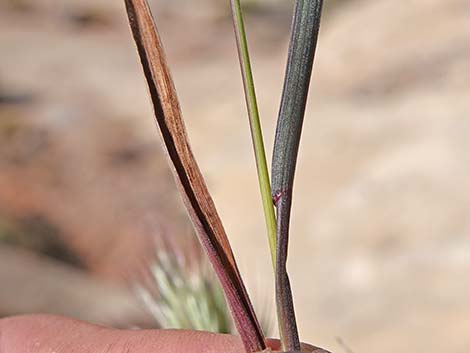 Leaves are long and narrow |
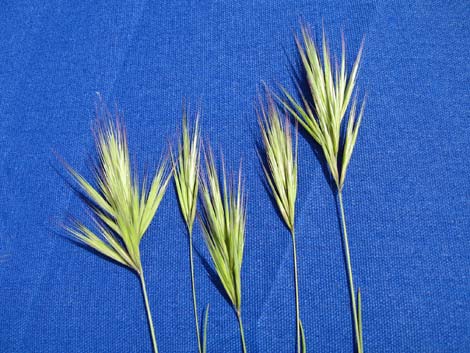 Red brome flowerheads stand erect |
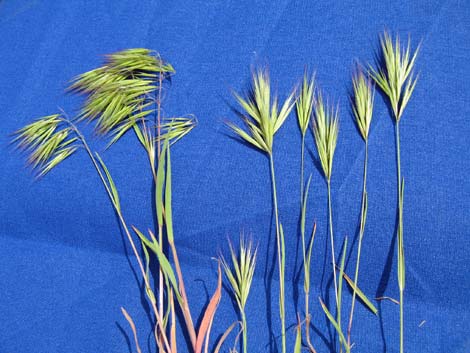 Cheatgrass (left) and Red Brome (right) |
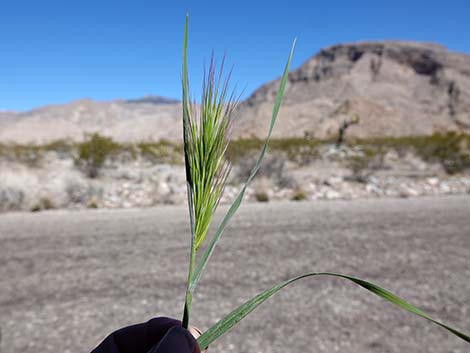 |
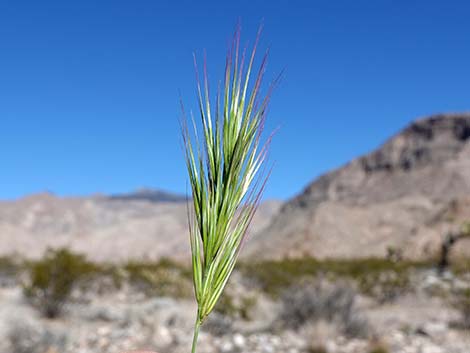 |
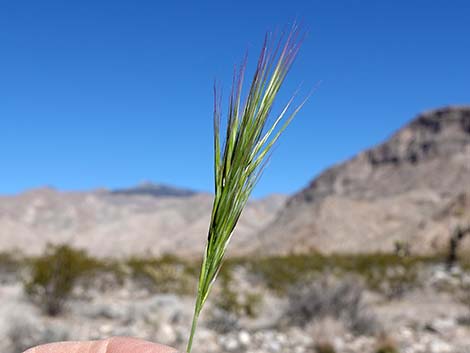 |
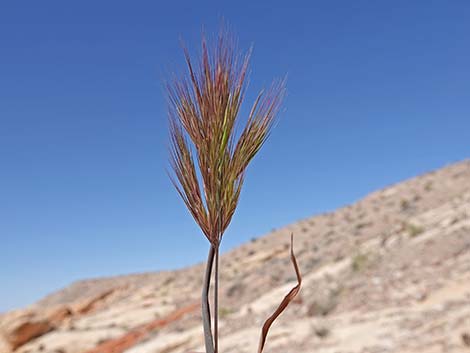 |
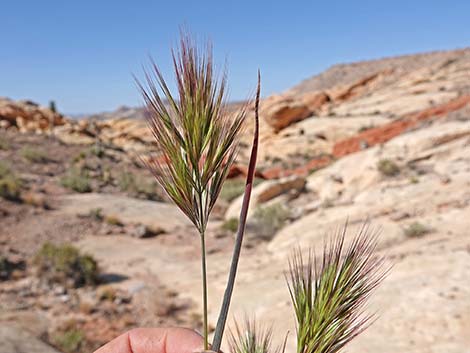 |
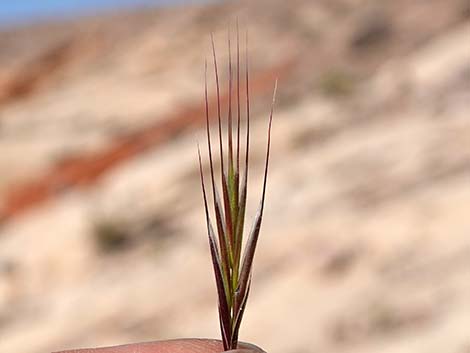 |
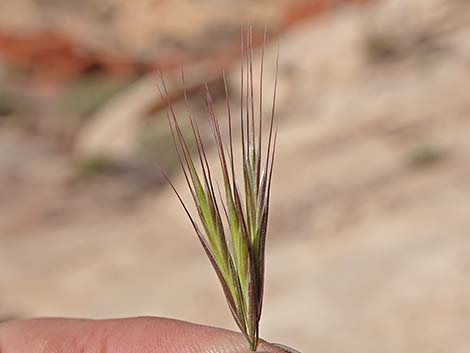 |
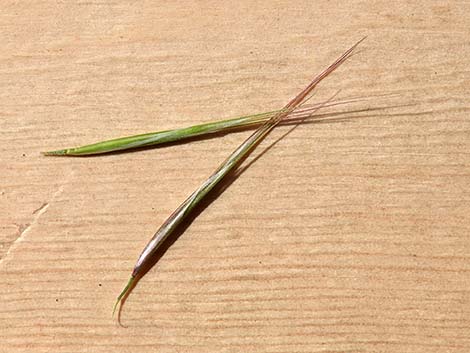 |
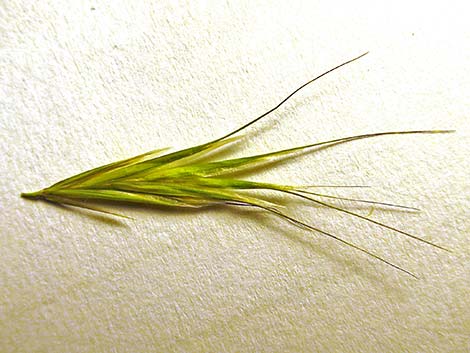 |
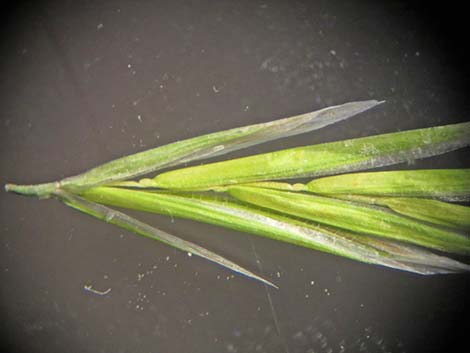 |
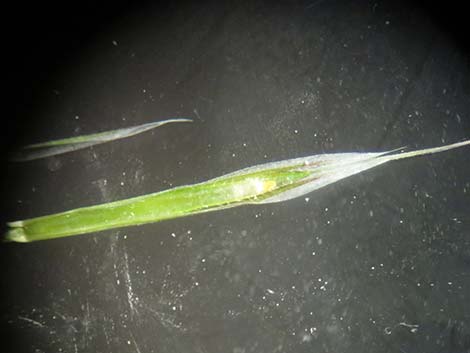 Single Red brome flower with yellow stamens |
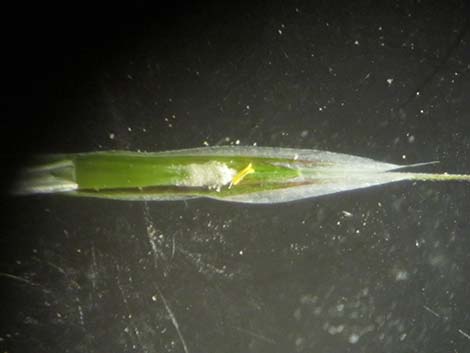 Single Red brome flower with yellow stamens (filament is broken) |
Note: All distances, elevations, and other facts are approximate. Names generally follow the USDA database.
![]() ; Last updated 240911
; Last updated 240911
| All Grasses | Plant Species Index | Glossary | Copyright, Conditions, Disclaimer | Home |